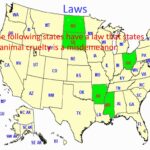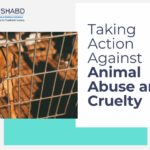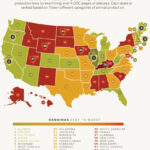Throughout the annals of history, human beings have shared an intricate tapestry of relationships with the animal kingdom. These bonds range from nurturing companionship to abhorrent cruelty. However, the evolution of formal legal frameworks to protect animals is a relatively recent phenomenon. The emergence of animal cruelty laws marks a pivotal shift in societal values, mirroring our evolving understanding of sentience and ethical treatment.
The origins of animal welfare legislation can be traced back to ancient civilizations, long before the establishment of formal laws. The ancient Egyptians revered animals, incorporating them into their religion and societal norms. Cats, in particular, were celebrated for their role in protecting grain supplies from pests. This early appreciation can be seen as a precursor to the recognition of animal rights, albeit in a much more rudimentary form.
Fast forward to the Middle Ages, wherein the often brutal conditions for working animals, particularly horses and oxen, began to spark public outcry. This culminated in various regional regulations. However, it wasn’t until the 19th century that a more cohesive and organized approach to animal welfare emerged globally. A notable landmark was the establishment of the Society for the Prevention of Cruelty to Animals (SPCA) in London in 1824. This pivotal moment signaled a burgeoning awareness of animal suffering, akin to the flickering flame of a lantern piercing through the darkness of ignorance.
Founded by a group of concerned citizens, the SPCA was the first organization dedicated to preventing cruelty towards animals. Its creation was a watershed moment, illuminating the widespread disregard for the welfare of animals that many had previously accepted as the norm. The founders of the SPCA envisioned a world where animals would be granted protection under the law, and their efforts laid the groundwork for similar organizations across the globe, echoing the initial ripples that transform into a sweeping tide.
In the United States, animal cruelty laws began to take shape shortly after the formation of the SPCA. The first American organization of its kind, the ASPCA (American Society for the Prevention of Cruelty to Animals), was founded in 1866. The impact of the ASPCA was profound, acting as both a guardian angel for countless animals and a catalyst for legislative change. It sought not only to address the immediate suffering of animals but also to instigate a broader societal reckoning regarding the ethical obligations owed to them.
As the 19th century progressed, animal welfare advocates encountered fierce resistance. The dominant belief system often rendered the notion of animal rights as frivolous, even preposterous. Yet, the advocacy of early animal welfare figures such as Henry Bergh and Caroline Earle White began to chip away at these entrenched norms, galvanizing public support and attention. They were akin to the diligent gardeners tending to a fragile seedling, nurturing it against the elements to ensure it could grow and thrive.
The late 19th and early 20th centuries saw a surge in the enactment of animal cruelty laws across various jurisdictions. In 1876, the first Animal Welfare Act in the UK was established, creating unprecedented foundations for animal protection legislation. Yet, even as these laws began to proliferate, they were often riddled with loopholes and inconsistencies, reflecting the ambivalence of society towards the full recognition of animal rights. They served as a protective shield, albeit a frail one, against the industrial and agricultural demands that routinely led to the suffering of sentient beings.
The industrial revolution played a pivotal role in reshaping societal views on animal cruelty, particularly as mechanization began to eclipse the reliance on animals for labor. As factory farming emerged, so too did the ethical questions surrounding the treatment of livestock. The vision of animals as mere commodities became increasingly scrutinized, igniting the flames of advocacy for more humane treatment and significant reforms. By the mid-20th century, new legal frameworks were being proposed, aimed at addressing not just the immediate cruelty but also the systemic exploitation of animals.
The 20th century also heralded the rise of international animal welfare organizations, focusing on global challenges and fostering collaborative efforts across borders. Institutions like the World Animal Protection played a crucial role in promoting animal welfare legislation while raising awareness about the ethical considerations regarding the treatment of animals worldwide. This represents not merely a fight against cruelty but an awakening of the human conscience, as we grapple with our status as stewards of the planet and its non-human inhabitants.
In the contemporary landscape, animal cruelty laws continue to evolve, driven by greater awareness and advocacy. An increasing body of scientific evidence is establishing that many animals possess a level of sentience that demands our respect and protection. Advocacy groups tirelessly work to amend laws and eliminate practices that subject animals to cruelty, calling for higher standards of care in every industry that interacts with animals.
Today, animal cruelty laws are not just reactive measures; they are proactive instruments for promoting a culture of empathy and ethical treatment. Landmark cases and legislative reforms are shaping the reality of animal welfare, from farm-to-fork realities to companion animals, emphasizing the profound interconnectedness of life. Each victory, each legal amendment serves as a reassuring reminder that humanity can aspire towards compassion, melding the ideals of justice with the intrinsic values of coexistence.
As society continues to grapple with the intricacies of human-animal relationships, the emergence and evolution of animal cruelty laws serve as a potent reminder of our collective responsibility. Every stride taken, every voice raised in favor of animal welfare contributes to an ongoing narrative—a narrative defined by not only the protection of those who cannot speak for themselves but also our fundamental humanity. In this unfolding saga, we are invited to reflect upon our legacies and the choices we make, shaping a more empathetic world for all beings.







